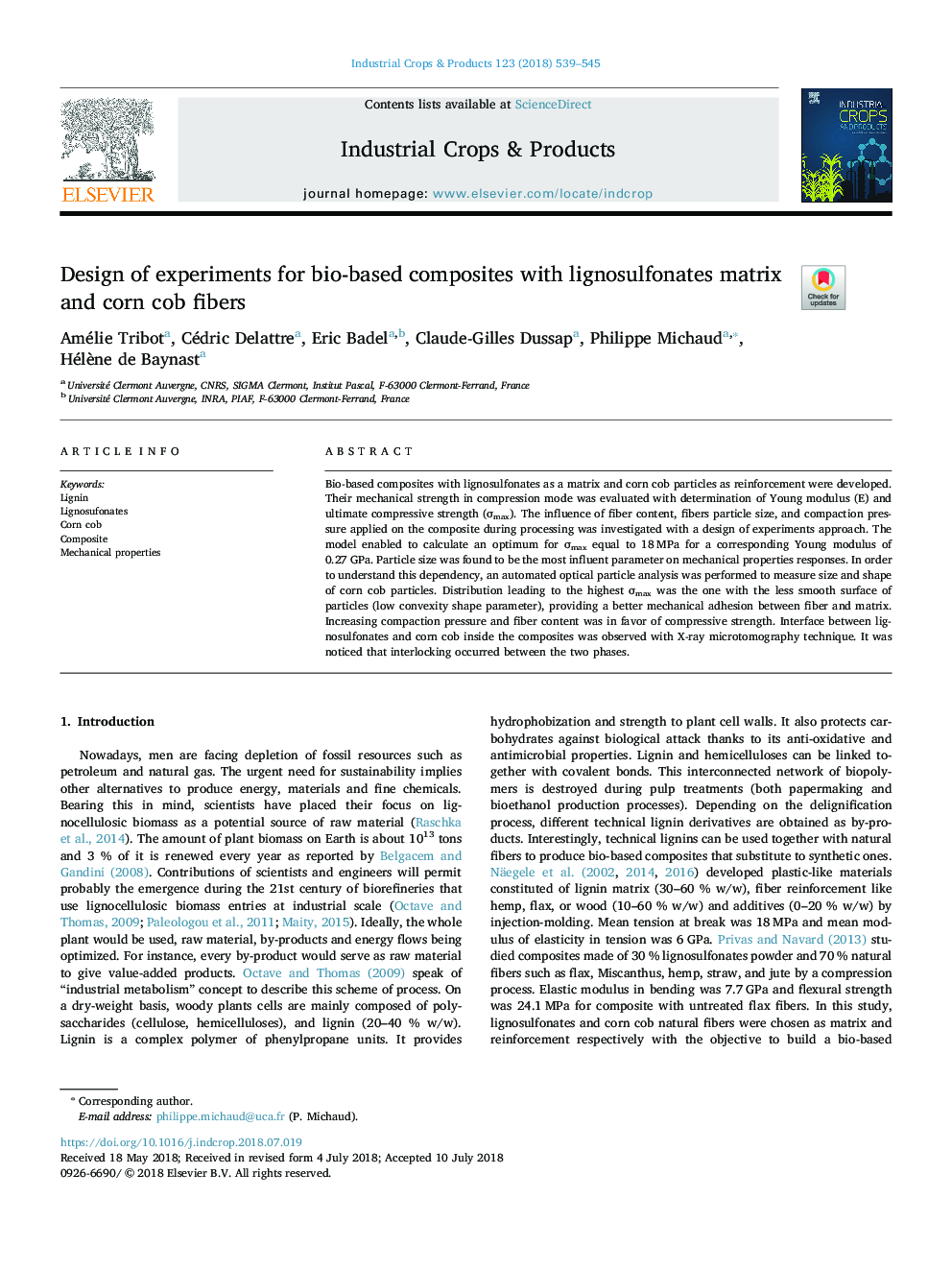| Article ID | Journal | Published Year | Pages | File Type |
|---|---|---|---|---|
| 10117068 | Industrial Crops and Products | 2018 | 7 Pages |
Abstract
Bio-based composites with lignosulfonates as a matrix and corn cob particles as reinforcement were developed. Their mechanical strength in compression mode was evaluated with determination of Young modulus (E) and ultimate compressive strength (Ïmax). The influence of fiber content, fibers particle size, and compaction pressure applied on the composite during processing was investigated with a design of experiments approach. The model enabled to calculate an optimum for Ïmax equal to 18âMPa for a corresponding Young modulus of 0.27âGPa. Particle size was found to be the most influent parameter on mechanical properties responses. In order to understand this dependency, an automated optical particle analysis was performed to measure size and shape of corn cob particles. Distribution leading to the highest Ïmax was the one with the less smooth surface of particles (low convexity shape parameter), providing a better mechanical adhesion between fiber and matrix. Increasing compaction pressure and fiber content was in favor of compressive strength. Interface between lignosulfonates and corn cob inside the composites was observed with X-ray microtomography technique. It was noticed that interlocking occurred between the two phases.
Related Topics
Life Sciences
Agricultural and Biological Sciences
Agronomy and Crop Science
Authors
Amélie Tribot, Cédric Delattre, Eric Badel, Claude-Gilles Dussap, Philippe Michaud, Hélène de Baynast,
